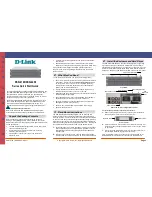
Chapter 9. Administration - Logical Tab
255
Draft Document for Review March 28, 2011 12:24 pm
7914Admin_Logical.fm
When you create a logical drive, the default segment size choose is 128 KB, unless you are
creating logical drives under a RAID3, or choosing the multimedia type for the logical drive, in
which case a segment size of 256 KB is used.
The choice of a segment size can have a major influence on performance in both IOPS and
throughput. You can choose the defaults, which is a good choice for general usage, or
consider the following to properly select a the logical drive segment size customized for your
needs:
The characteristics of your application, IOPS demanding, or Throughput (MB/s)
demanding, whether random or sequential.
The I/O block size of the host that will use the logical drive.
– Small IO sizes allow for greater transaction (IOPS) rates.
– Large IO sizes allows a better transfer rate in MB/s.
The RAID protection and number of disk drives that are participating in the logical drive
array.
To calculate the best segment size in this environment, consider the RAID protection and
number of drives participating in the array.
Segment Size > I/O block size request
This is the best option for high IOPS and random requests.
Several transactions are satisfied in a single operation to a disk.
There is higher IOPS.
It is ideal for random I/O requests, such as the database file system.
The best option is start with Segment size >= 2 x Block Size for high IOPS.
Segment Size = I/O block size request
It is very difficult to align segment size with block size, so this option is not practical to
implement, so use the other two scenarios.
Every request transaction uses exactly one disk operation.
There is high IOPS.
This option is ideal for random I/O requests, such as the database file system.
Segment Size < I/O block size request
This is the best option to obtain MB/s performance and low IOPS, which is the norm for
multimedia applications.
More disks are used or requested.
There is higher throughput (MB/s).
It is ideal for sequential writes, such as a large multimedia application.
It is optimized when a single I/O request can be serviced with a single or exact multiple
data stripes (the segment size multiplied by the number of drives in the array that are used
for I/O). In this case, multiple disks are used for the same request, but each disk is only
accessed once, or the exact number of times if the block size is too big and you have to
use multiple stripes.
To calculate the best segment size in this environment, consider the RAID protection and
number of drives participating in the array by using the following formula:
Segment size = (Block size / X), where X is the number of drives used in the array for I/O
and where:
– RAID 0=Number of drives
Summary of Contents for DS3500
Page 2: ......
Page 5: ...iii Draft Document for Review March 28 2011 12 24 pm 7914edno fm ...
Page 789: ......
















































